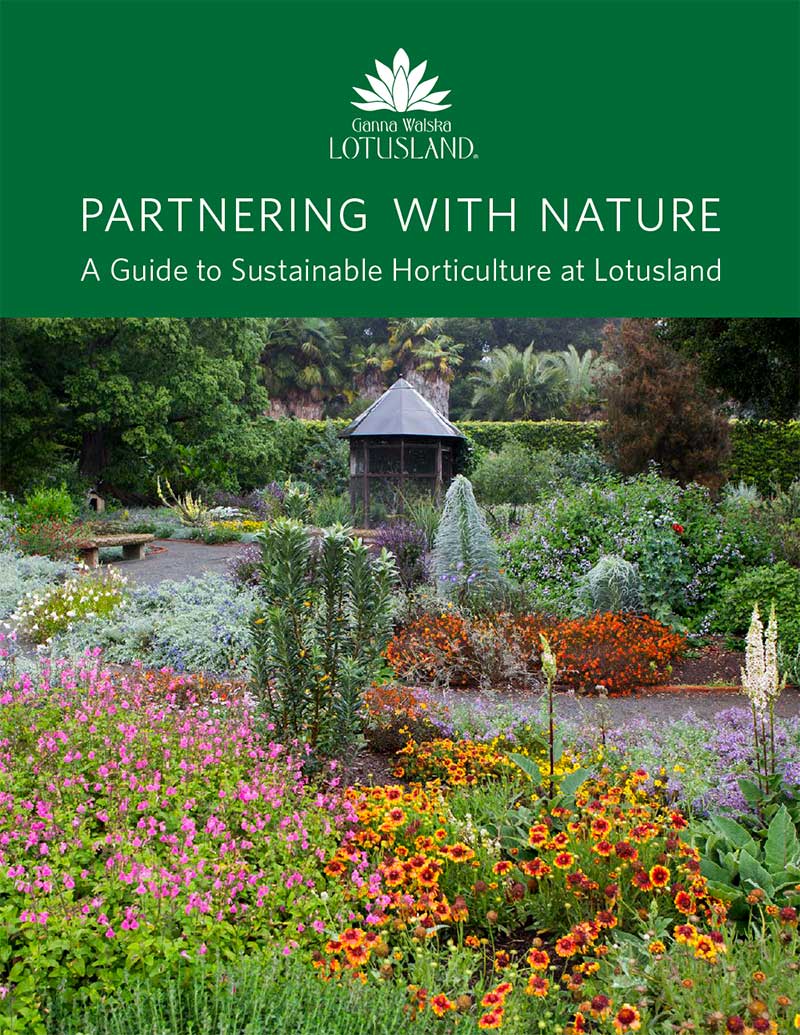A Guide to Sustainable Horticulture at Lotusland
PARTNERING WITH NATURE
A Guide to Sustainable Horticulture
Contents
Introduction
Ganna Walska Lotusland is renowned for its dramatic design and world-class plant collections. While visitors are awed by the Garden’s beauty, another dimension of its reputation and success is less apparent to the untrained eye. In the decades since opening to the public in 1993, our environmentally conscious approach to horticulture has become a cornerstone of Lotusland’s reputation.
Lotusland’s sustainable horticulture practices harness the power of ecology by modeling natural systems. Instead of working against natural processes, the gardener works with them. This ecologically based approach requires respecting the garden as an ecosystem for a diversity of organisms, both above and below ground. Together, these organisms maintain a dynamic balance that supports healthy plants.
Our sustainable horticulture program is built on four pillars: understanding plant needs and garden conditions, building healthy soils, creating habitat, and eliminating harmful practices (in particular the use of synthetic fertilizers and pesticides). This approach results in a range of desirable outcomes including exceptional plant health, increased biodiversity, the recycling of green waste, reduced water usage, and a reduction in pollution from runoff. These essential components of Lotusland’s sustainable horticulture practices can easily be implemented in your home garden.
Getting Started
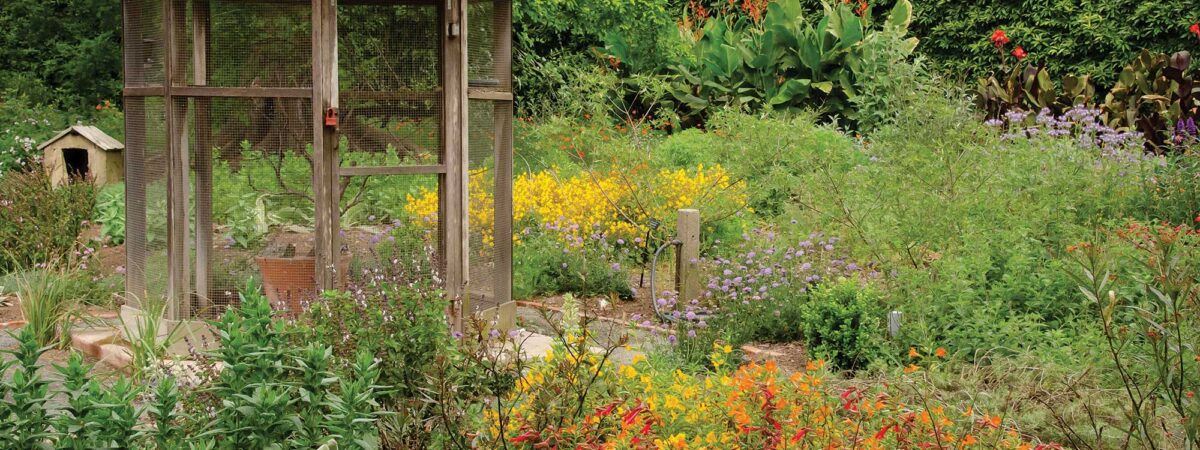
Lotusland wasn’t always a model of sustainability. In its earlier years, the Garden was managed with practices that would dismay today’s enlightened horticulturists. For decades, the routine application of synthetic pesticides and fertilizers was the standard practice and little attention was paid to the Garden as an ecosystem. Plant health suffered as a consequence. In the 1990s, efforts towards more environmentally friendly practices were begun in earnest, but Lotusland’s transition to sustainable horticulture practices didn’t happen overnight.
If you aspire to create your own ecologically driven garden, begin by committing to the sustainable practices outlined here. As much as your circumstances allow, go “all in” on these practices from the start. When used together, they provide overlapping benefits. Don’t pick and choose which sustainable practices to adopt. Ignoring any of them will result in setbacks.
As your garden transitions to sustainable practices, there will be an adjustment period during which the system works towards equilibrium. Many problems will go away, while others might temporarily get worse. Don’t panic and give into synthetic products if an issue arises. Imbalances will sort themselves out in time.
The sooner that you fully adopt sustainable practices, the sooner you will see the results. However, don’t let the size of your space or your budget deter you from beginning changes. Even if you are only able to incorporate a single wildlife friendly plant, it’s a starting point and has an impact. Everyone has the ability to succeed in creating a sustainable garden.
Pillars Of Lotusland’s Sustainable Horticulture Program
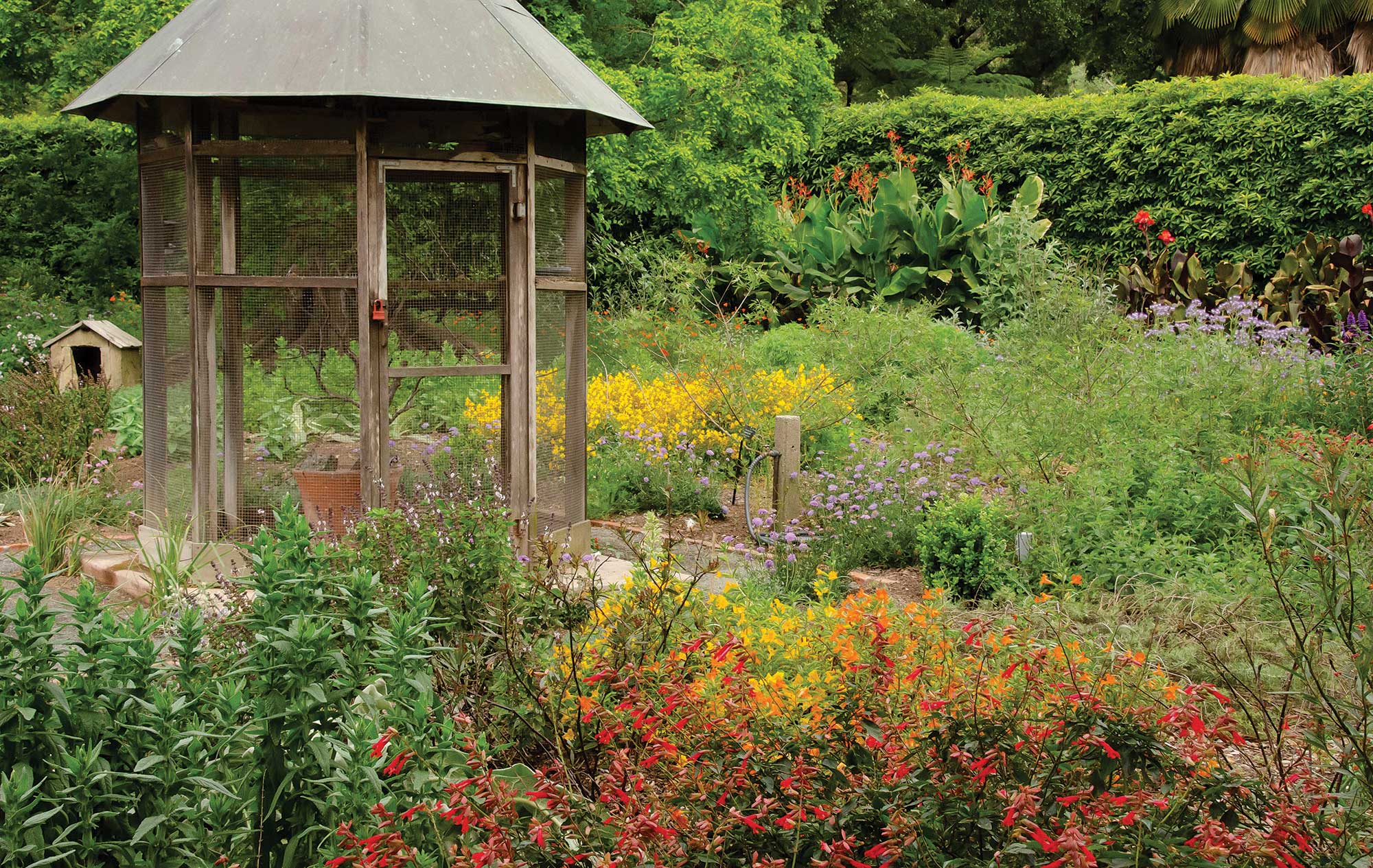
Understand Plant Needs and Garden Condition
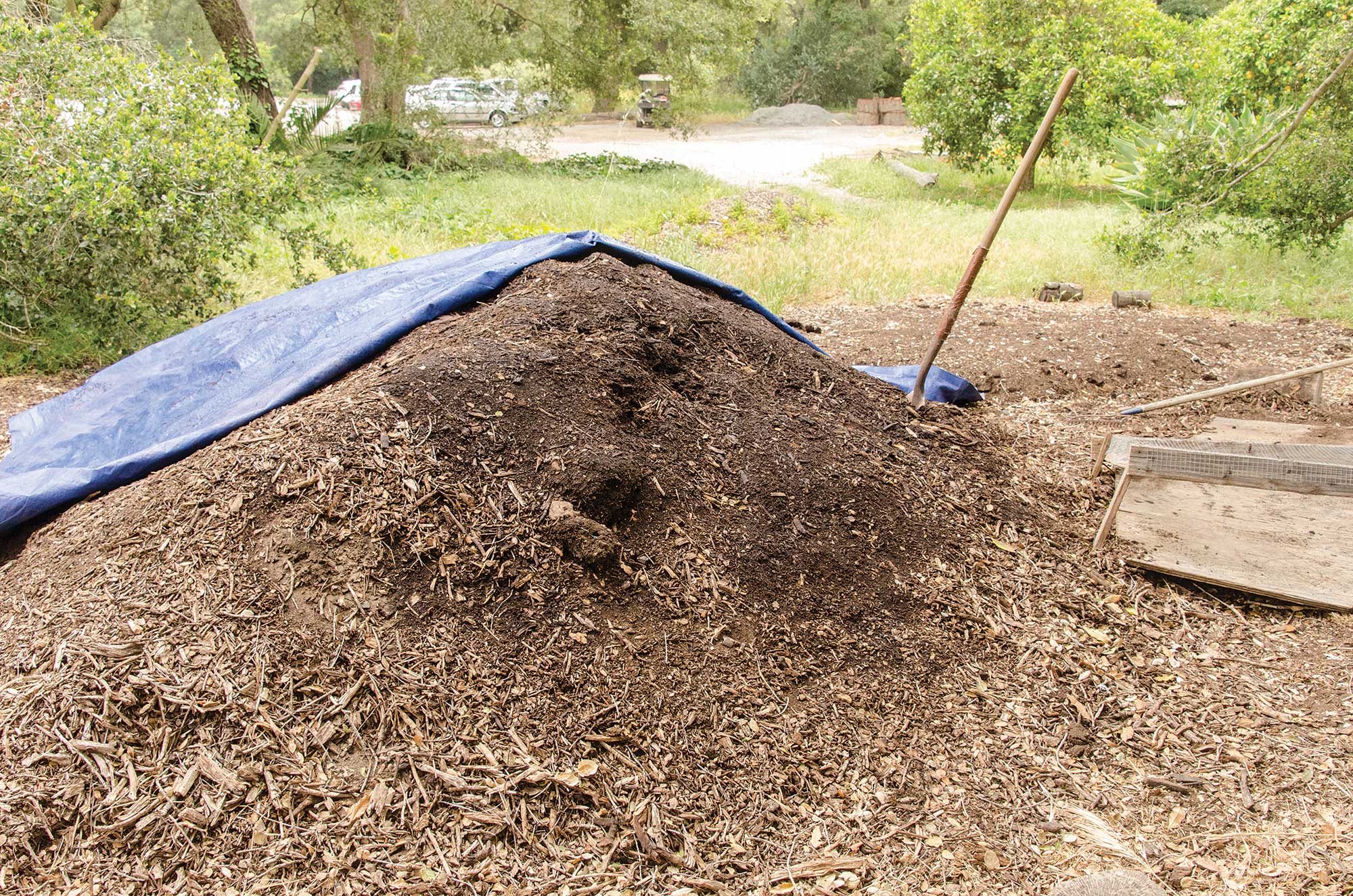
Build Healthy Soil

Create Habitat to Encourage Biodiversity

Eliminate Harmful Practices
Top Tips for Transitioning to Sustainable Horticulture
Lotusland’s sustainable horticulture practices harness the power of ecology by modeling natural systems. Instead of working against natural processes, the gardener works with them.
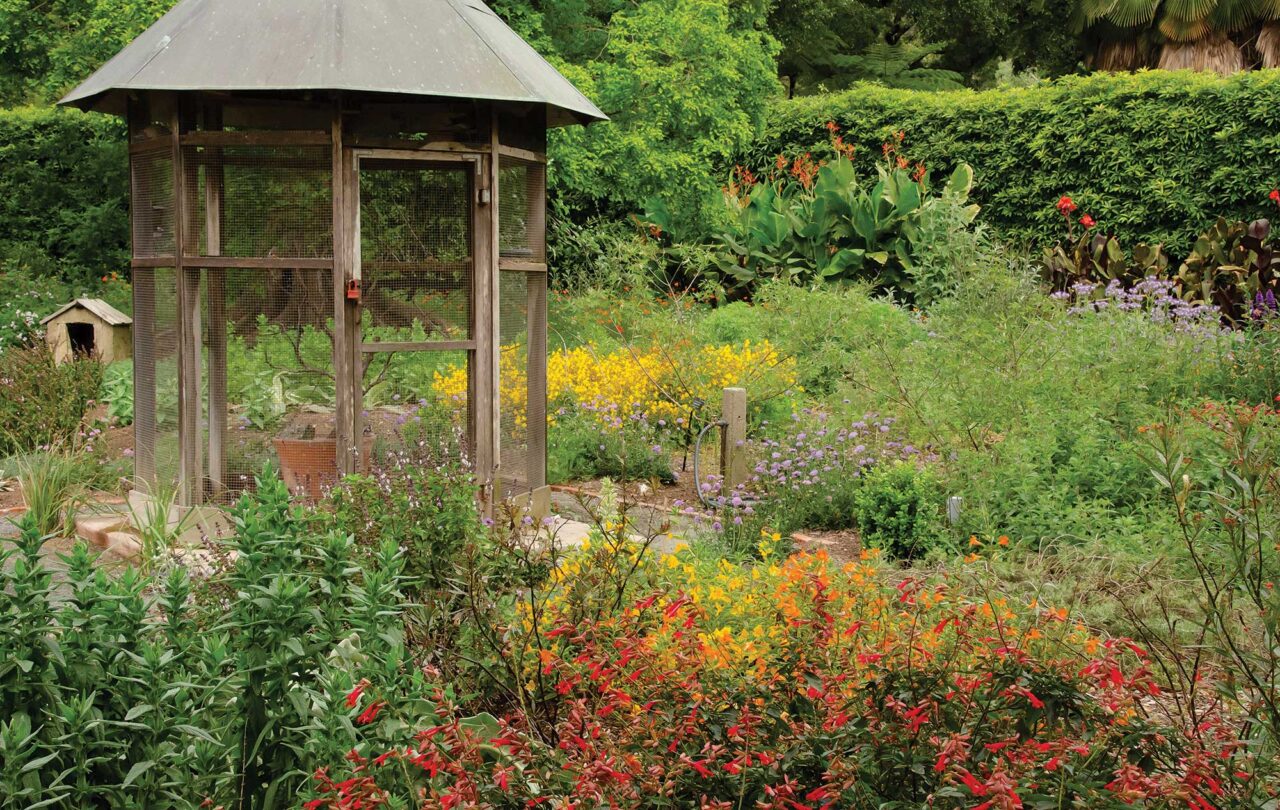
Plant List
Lotusland’s sustainable horticulture practices harness the power of ecology by modeling natural systems. Instead of working against natural processes, the gardener works with them.

Tours
To learn more about Lotusland’s sustainability program and book a professional visit, consultation, or behind-the scenes tour, contact us at info@lotusland.org
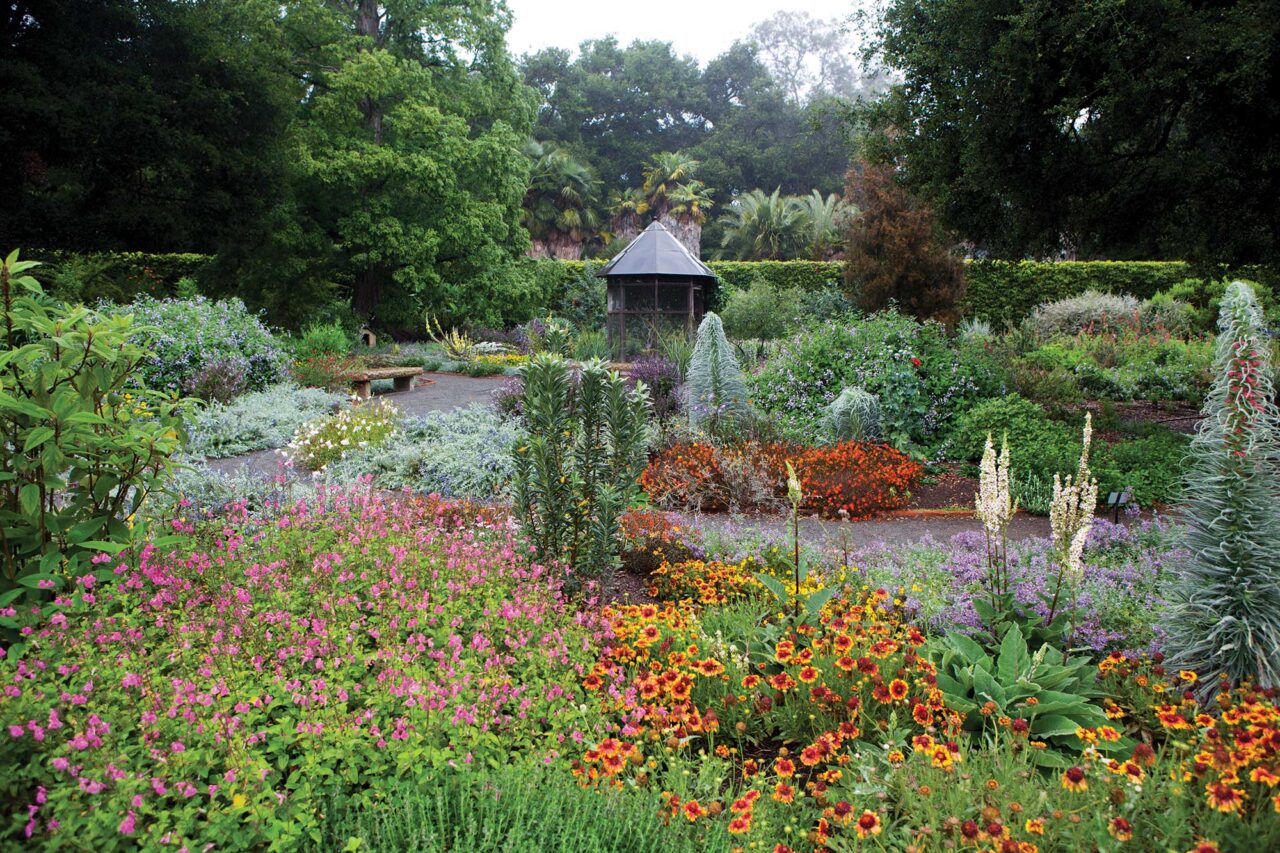
Resources
Download the full Technical Guide in PDF Format.
